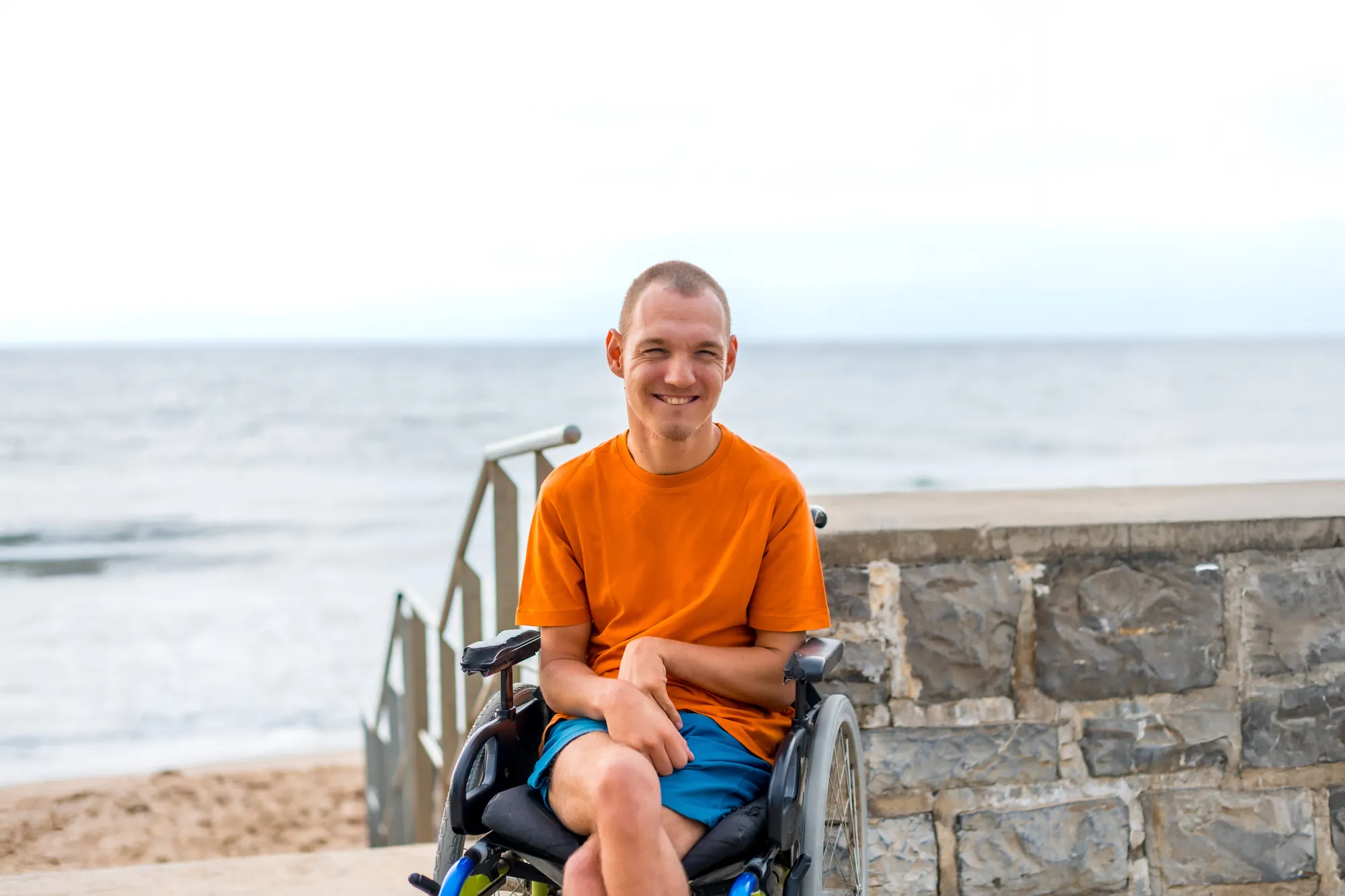Navigating accessibility while traveling often requires a lot of effort, research, and preparation. While many hotels, transportation providers, and destinations have accessible options, standards and implementation vary widely. For travelers with disabilities, whether visible or invisible, these factors can make traveling a more challenging endeavor. Whether traveling for leisure, in a group, or for business, people with disabilities need reliable systems that work. For travelers looking to reduce uncertainty and build rewarding travel experiences, a combination of strategic planning and destination insight makes all the difference.
Exclusive Offers.
Sign up to receive personalized promotions and packages for your next vacation from trusted travel experts.
Know Your Rights
Individuals traveling with disabilities in the US are protected under the Americans with Disabilities Act (ADA). This landmark law ensures that people with disabilities have equal access to public accommodations, including hotels, restaurants, public transportation, and event venues. Hotels are required to offer accessible rooms with specific features, such as roll-in showers and visual fire alarms, and must hold those rooms for guests who need them.
The ADA also applies to bus and train transportation. Providers like Greyhound and Amtrak must make reasonable accommodations like accessible seating, lifts or ramps, and assistance at stations. Public transit systems in most cities must offer paratransit services for travelers who cannot use fixed-route buses or subways.
Under the Air Carrier Access Act (ACAA), airlines are prohibited from discriminating against passengers with disabilities. Carriers are legally required to assist with boarding, deplaning, making flight connections, and loading or stowing mobility devices. Travelers are also entitled to seating accommodations that meet disability-related needs. Before flying, it’s a good idea to contact the airline to discuss how your needs will be met. If you’re not satisfied with the response, you have the right to speak with a Complaints Resolution Officer (CRO). Every airline must have a CRO available 24/7 to resolve disability-related concerns.
Plan Way Ahead
The most important aspect of traveling with a disability is planning, which should ideally happen well in advance. Accessible rooms and services are often limited in number, and availability may not be guaranteed. Contacting hotels, tour companies, airlines, and transportation providers directly is essential. Ask specific questions about accessibility features, amenities, and services. Consider working with a travel advisor to help you determine these details. They can even work with companies that arrange accessible devices, such as scooters.
Air travel introduces another layer of preparation. Take, for example, travelers who use oxygen or other medical equipment. Documentation and approval from the airline are often required in advance. Each carrier has different protocols, and coordinating these steps early prevents delays or denials at the airport.
Take Advantage of Available Resources
A growing number of programs are designed to improve accessibility across major travel touchpoints. TSA Cares is a prime example. This service provides individualized assistance through airport security for travelers with medical conditions or disabilities. One caveat to TSA Cares is that it requires at least 72 hours’ advanced notice to utilize.
The Hidden Disabilities Sunflower program is another increasingly visible support tool for accessible travel. Recognized by over 300 airports in more than 30 countries across 18 global airlines, this initiative allows travelers with non-visible disabilities to wear a discreet sunflower lanyard. The card and lanyard serve as an indicator that the wearing traveler may need extra time, support, or patience. HDS lanyards are available for free through participating organizations or can be ordered directly from the program’s website. No proof of disability is required. Travelers should note that an HDS lanyard does not provide fast-track access or preferential treatment. Instead, it serves as a simple and powerful way to increase understanding during the travel experience.
Considerations for Vacation, Group, and Business Travelers
Accessible travel looks different depending on the purpose of the trip. For leisure travelers, destinations with inclusive infrastructure and tourism boards that actively highlight accessibility tend to be the most reliable. It’s helpful to look for tours labeled as wheelchair-friendly, mobility-accessible, or sensory-friendly. Cruises and all-inclusive resorts also tend to offer detailed accessibility information and consistent support for a range of needs.
Group travel requires extra coordination to ensure all members can comfortably participate. Communicating accessibility needs to group leaders, travel advisors, or event organizers early in the planning process is key. It’s also important to plan for extended travel time, accessible rest stops, and contingency options. Group activities should accommodate a range of mobility and/or sensory needs so no one is excluded.
Business traveler accessibility should be prioritized. Employers should proactively offer ADA-compliant hotel rooms, accessible meeting spaces, and transportation options for those in need. Tools like the Hidden Disabilities Sunflower can also reduce stress in busy conference settings or unfamiliar transit environments.
Accessible Destinations in the US
While accessibility can still vary widely from one destination to the next, several US cities have made consistent efforts to ensure that public transit, cultural attractions, and accommodations are designed with inclusion in mind.
Washington, D.C.
The nation’s capital is one of the most accessible cities in the country, particularly for visitors with mobility-related needs. Most monuments and memorials, including the Lincoln Memorial and the National Mall, offer smooth, step-free access and wide pathways. The Smithsonian museums are free to enter and offer wheelchair loans, assistive listening devices, and accessible entrances. Additional sensory and cognitive accommodations are often available at these attractions.
Orlando, Florida
Orlando is one of the most accessible destinations for vacations. Walt Disney World and Universal Orlando provide detailed disability access services, sensory guides, and accessible ride options. Wheelchair and scooter rentals are widely available in parks. For guests with service animals, relief areas are located around the parks and are marked on park maps and mobile apps, making it easy to find a nearby spot without disrupting the day’s activities.
Chicago, Illinois
Chicago blends world-class attractions with a transit network and civic infrastructure that supports inclusive access. CTA buses and trains offer accessible boarding and priority seating, while stations are increasingly upgraded with elevators and ramps. Major cultural venues like the Art Institute and Shedd Aquarium offer sign language interpreters, assistive listening devices, and accessible entrances. While at the waterfront, the scenic Lakefront Trail, Navy Pier, and Millennium Park have barrier-free walking paths and accessible restrooms.
Seattle, Washington
Despite its hills, Seattle has made steady progress toward becoming a model of urban accessibility on the West Coast. The Link Light Rail offers accessible stations throughout the city, including service to the airport and downtown. There are also ADA-accessible ferries that provide seamless travel between the city and surrounding areas. Downtown Seattle is lined with curb ramps and tactile paving to improve navigation for travelers with mobility and vision impairments. Plus, attractions like the Space Needle, Pike Place Market, and Chihuly Garden and Glass feature elevator access, level entryways, and inclusive amenities.
Plan Accessible Travel with Confidence
Planning trips for people with disabilities requires careful attention to detail. The Travel Team understands the unique needs of travelers with disabilities and is here to help coordinate every aspect of your journey, so you can focus on the experience, not the logistics. Contact us today to start planning a trip that works for you!


